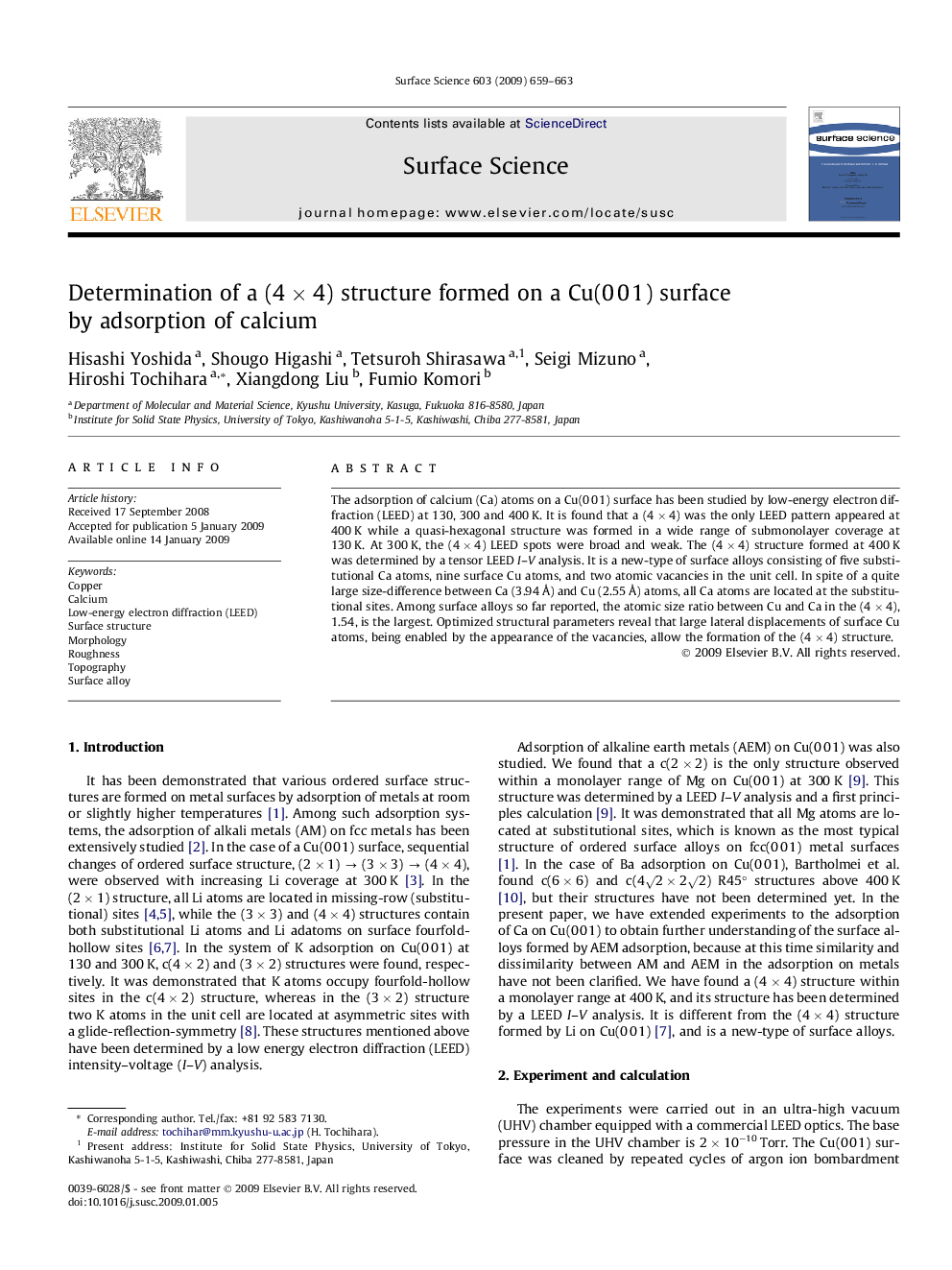| Article ID | Journal | Published Year | Pages | File Type |
|---|---|---|---|---|
| 5424310 | Surface Science | 2009 | 5 Pages |
Abstract
The adsorption of calcium (Ca) atoms on a Cu(0Â 0Â 1) surface has been studied by low-energy electron diffraction (LEED) at 130, 300 and 400Â K. It is found that a (4Â ÃÂ 4) was the only LEED pattern appeared at 400Â K while a quasi-hexagonal structure was formed in a wide range of submonolayer coverage at 130Â K. At 300Â K, the (4Â ÃÂ 4) LEED spots were broad and weak. The (4Â ÃÂ 4) structure formed at 400Â K was determined by a tensor LEED I-V analysis. It is a new-type of surface alloys consisting of five substitutional Ca atoms, nine surface Cu atoms, and two atomic vacancies in the unit cell. In spite of a quite large size-difference between Ca (3.94Â Ã
) and Cu (2.55Â Ã
) atoms, all Ca atoms are located at the substitutional sites. Among surface alloys so far reported, the atomic size ratio between Cu and Ca in the (4Â ÃÂ 4), 1.54, is the largest. Optimized structural parameters reveal that large lateral displacements of surface Cu atoms, being enabled by the appearance of the vacancies, allow the formation of the (4Â ÃÂ 4) structure.
Keywords
Related Topics
Physical Sciences and Engineering
Chemistry
Physical and Theoretical Chemistry
Authors
Hisashi Yoshida, Shougo Higashi, Tetsuroh Shirasawa, Seigi Mizuno, Hiroshi Tochihara, Xiangdong Liu, Fumio Komori,
